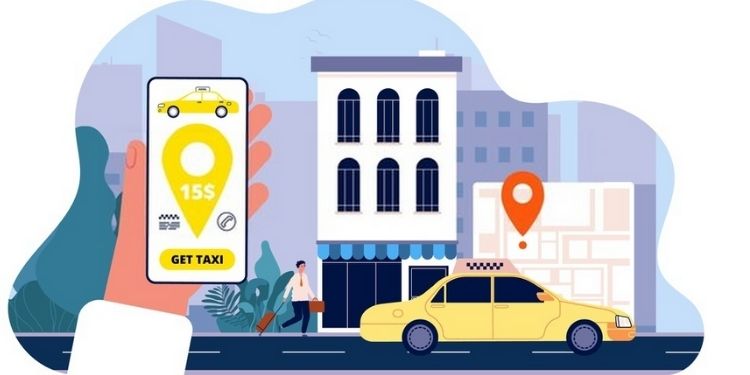How to create an Uber-like app? Insights, Features and Cost

Taxi booking apps are synonymous with Uber-like app. Agree? Uberisation is the foundation for the new-age taxi business. Entrepreneurs who wish to get their foot in the online taxi business first start out by analyzing Uber’s business model and the app’s features.
This blog is more of a lookbook that will describe Uber’s business model, workflow, features, and budget to create an Uber-like app. Come and delve into this topic!
Table of Contents
ToggleSet of traits that makes Uber the top ride-hailing company
- Less waiting time
What can be more annoying than waiting for a taxi for a long time? Uber is a pioneer in providing a seamless user experience, which is one of the strong reasons why the company is able to thrive in the taxi industry. When compared to other taxis, the waiting time is less in Uber.
- Safety and round the clock availability
Extending a 24×7 transportation facility is another chief trait of Uber, which helps in acquiring passengers. So, if the taxi services are available round the clock, then safety factors must also be taken into consideration. Let us see how Uber handles the safety of the passengers and drivers. In the past years, there were many incidents that reported violence against passengers by Uber’s drivers. Since then, Uber has been performing criminal checks yearly once and has a database of drivers’ records.
Again, the panic button introduced in Uber’s taxi booking app marks the best safety feature the app can present to its passengers as well as drivers.
- Carpooling facility
The app extends facilities for booking both ride-hailing and carpooling, which is easy for passengers to book as both are available in the same app. Carpooling is a popularly existing business model that comes under an economical rate for passengers as they will split up their charges with the co-passengers.
So, let us see how to develop a ride-hailing app that supports some of the best real-time features. Just before digging into the features of the ride-hailing app, let us see through the ride mapping algorithm of Uber.
Uber and its ride mapping algorithm
- The passengers who are willing to take the ride will choose the location.
- As per the location information, the in-built fare calculator will produce the fare details based on the distance and the base fare. Also, if the passenger books the taxi on peak hours, then the fare will be high in comparison to the usual fare.
- Next, the passenger will decide whether or not to confirm the ride depending on the fare.
- If they are willing to pay the fare, then they can confirm the ride, which will further be mapped to the nearest driver.
- The ride mapping algorithm will identify the number of drivers located in and around the passenger’s location. Among the number of the nearest drivers, the ride will be mapped to any of the available drivers.
- If the driver who gets the ride request confirms to take up the ride, then the app will automatically send a notification to the passenger. Suppose the driver rejects the ride request, then the ride request will be forwarded to a different driver. On the whole, the ride mapping algorithm will function in a loop manner until the ride request is fulfilled.
Features related to the passenger’s app
- Registration
New users joining your app will start from the registration process. Registration through social media profiles like Facebook, Twitter, etc., has become a new norm these days. The social media signup feature will be a time-saving option for your users.
- Vehicle tracker
Tracking the location of the vehicle is possible once the passenger gets the confirmation message from the driver.
- Fare calculator
Incorporating the fare calculator feature will be beneficial in two ways. The fare calculator will help them know the fare instantly, and at the same time, your business will gain transparency.
- History of rides
The passengers can recollect the details of the previous rides from the history feature. The history feature will contain an amalgamation of information such as ride fare, location, driver’s details, etc.
- Payment
Digital payment options should be given importance in addition to cash on delivery. While developing your app, you can customize the payment options, and the developer will incorporate the necessary application stack.
- Push notifications
The push notification feature is to inform users regarding ride-related information like confirmation message, booking status, arrival time, payment, etc.
Features related to the driver’s app
- Registration
The driver’s app can also be incorporated with the social media signup feature. Apart from the general details, drivers will have to provide their license details, total years of experience and medical examination report.
- Push notification
New ride requests are informed to drivers via push notifications. Other than that, messages received via push notifications include earnings, ride cancellation, etc.
- Navigation
The embedded map functionality inside the app will be of great help to drivers in finding the route to the given destination. Google Maps, Apple Maps, etc., are some of the popular maps incorporated into the ride-hailing app for finding the route.
- Availability
As said before, the ride-hailing app’s algorithm will map a request to a driver if they are available. So, the drivers have to mention whether they are available or not via the availability button enabled inside the app.
Features related to the admin panel
- Dashboard
Cumulative tasks can be performed through the admin panel’s dashboard. You can quickly get an overview of the business activities from a single place.
- User and driver management
The user and driver management functionality includes verifying the details of drivers/users, dispute management, etc.
- Booking management
The app will present you with the number of rides booked and the number of rides accepted. If there is a huge demand from the user’s side, then you can manually allot the ride requests to drivers.
Final thoughts
Technology stacks, features, and the location of the Uber-like app development company are the pivotal criteria in determining the app’s development cost. So, once you conclude the type of features you need in the app, the overall cost can be estimated. I hope that as a budding entrepreneur, you will find this blog helpful.
Alfred Williams, a distinguished business writer, navigates the corporate landscape with finesse. His articles offer invaluable insights into the dynamic world of business. Alfred's expertise shines, providing readers with a trustworthy guide through the complexities of modern commerce.
Recommended For You
Spread the loveCreating a well-designed and functional website starts long before coding begins. The prototyping phase is a critical step
Spread the loveTrade Shows are one of the most competitive environments for businesses to showcase their products and services. With
Spread the loveAudio-visual (AV) equipment plays a crucial role in ensuring the success of your event, whether it’s a corporate






